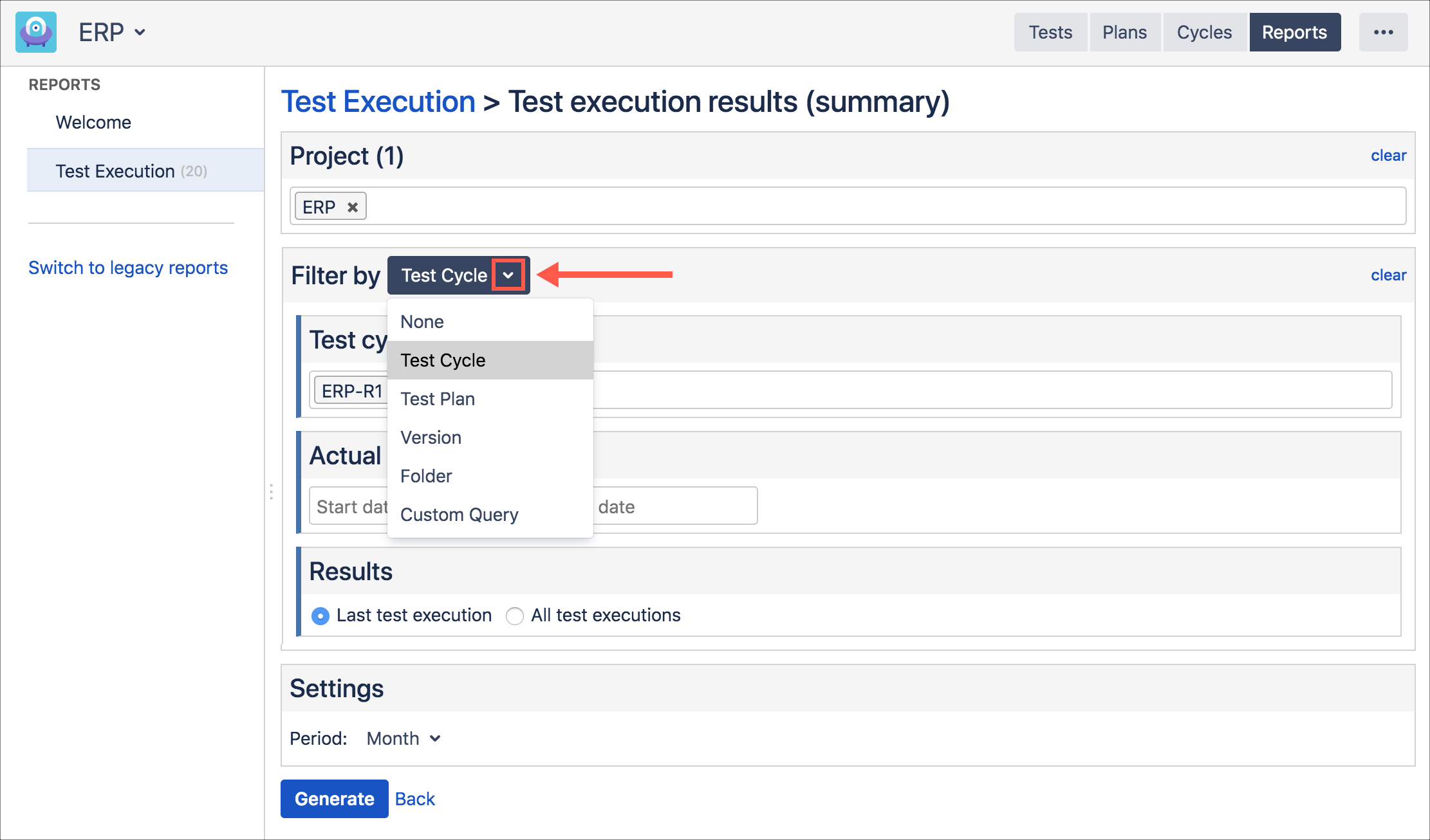Workflow Strategies
Zephyr Scale supports flexible workflows to foster collaboration between teams using traditional or agile development methodologies. Due to its flexible nature, there are many ways to manage your testing efforts with Zephyr Scale, so the following sections cover best practices. However, best practices are simply guidelines, and your testing processes and needs should dictate which of the suggested practices you adopt.
A brief summary of the common usage scenarios:
Agile development: Ad-hoc/lightweight approach for small teams using acceptance tests
Waterfall development with test cycles: Structured testing that takes place when it’s required to plan the test-execution cycles and assignments in advance (for structured regression testing)
Waterfall development with test plans: Structured testing with formal test planning. Instead of using Microsoft Word or Excel to specify traditional test-plan documents, you can create and customize test plans with Zephyr Scale to address any planning topics, such as scope, strategy, resources, environments, risks, and more.
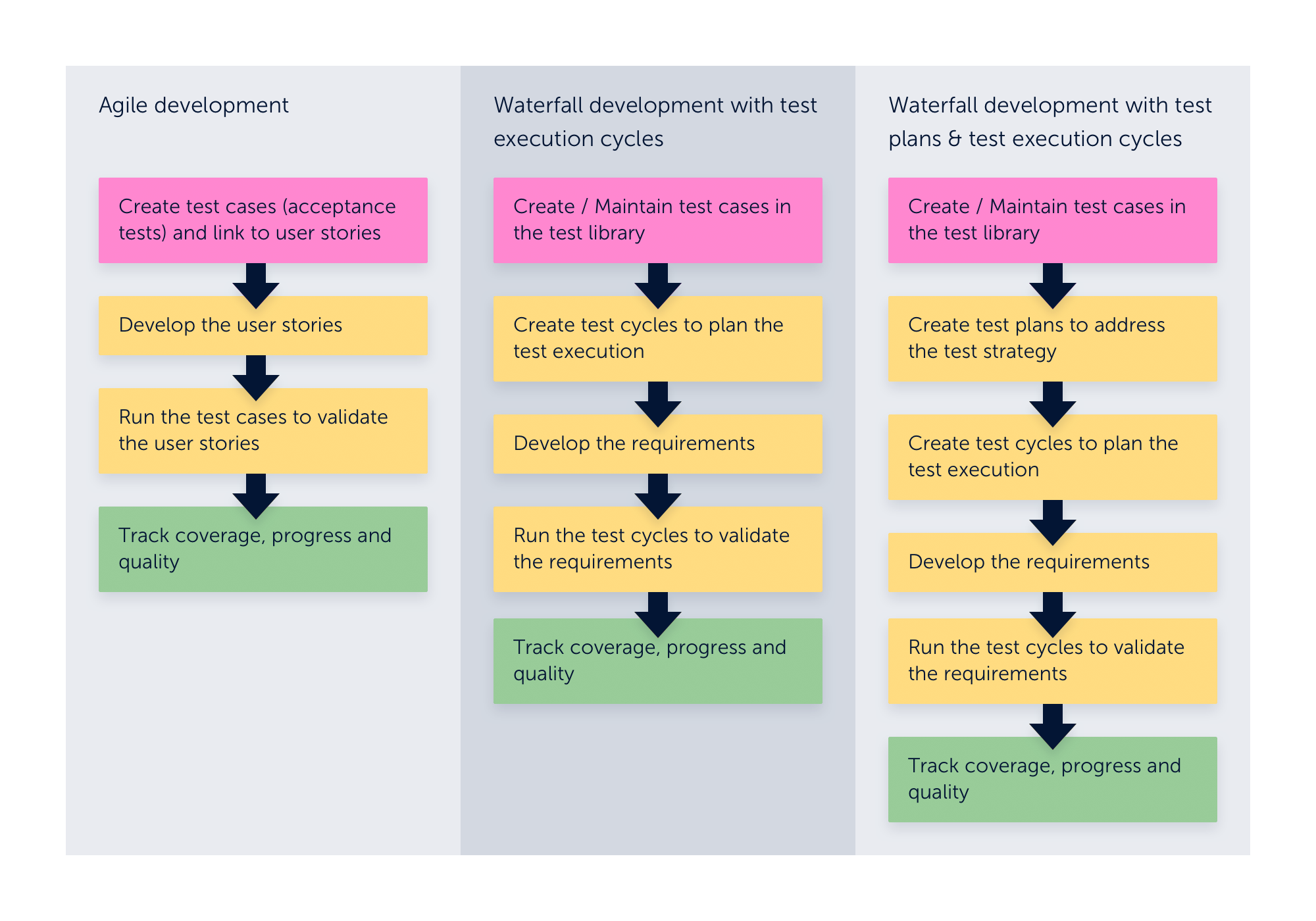
Waterfall Development with Test Cycles
Zephyr Scale supports traditional/waterfall development and testing processes. Traditional approaches demand that you plan test assignment and execution in advance, sometimes even before any code has been released. Using Zephyr Scale, you have the ability plan who will execute what test and when. Plus, you can track and compare the estimated progress against the actual results in real time, during test execution.
To plan testing efforts in waterfall, you need to create and manage test cycles, which are containers/groups of ordered test cases assigned to testers and environments. When a test case is executed, a test-execution result is generated and linked to the test cycle. The test case stores useful information, like the tester responsible for the execution, the execution date, the defects raised, the environment used, and the status of the execution (e.g. passed, failed, etc). With that in mind, when you generate reports and statistics filtered by test cycle, the information displays test-execution results, metrics, and coverage of the test cases associated with the test cycle, since the cycle is the container/group.
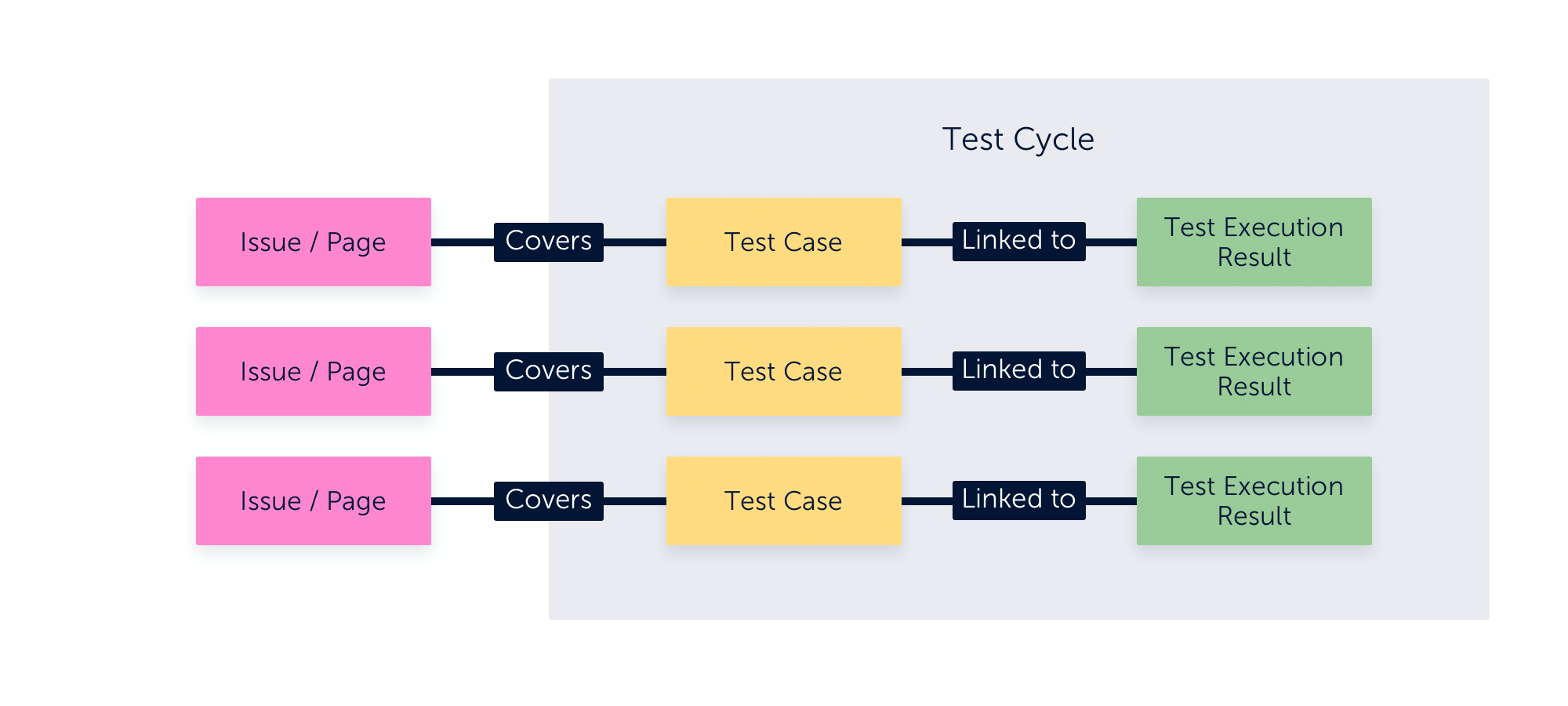
In Zephyr Scale
Within a project, manage your test library from the Tests view. Test cases in the test library can be shared across Jira projects.

Create a new test cycle and manage test cycles from the Cycles view.

On the Test Cycle screen, add a name and other field information to the Details tab.
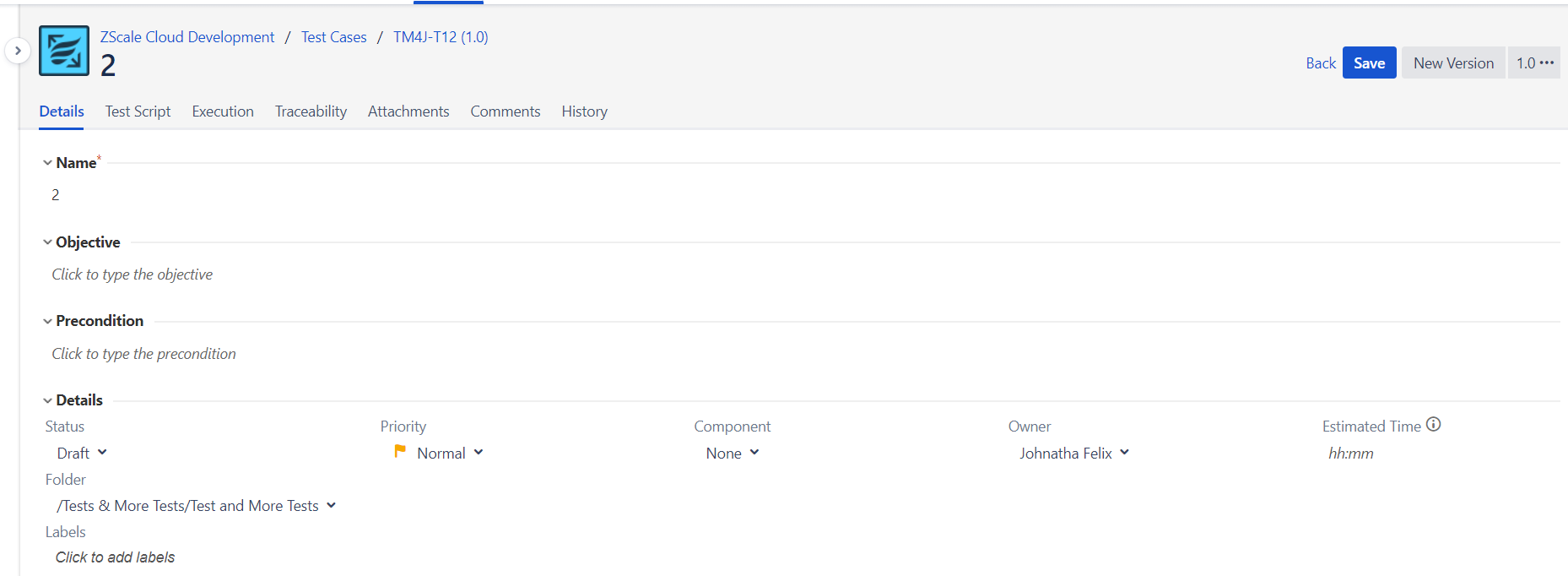
On the Test Cases tab, click Add Test Cases to add existing test cases from any Jira project to the cycle.
You can assign the tester responsible for executing the test case as well as a target environment.
The testing team can fire up the Test Player to execute the planned test cases in the test cycle, set test results, and raise defects.
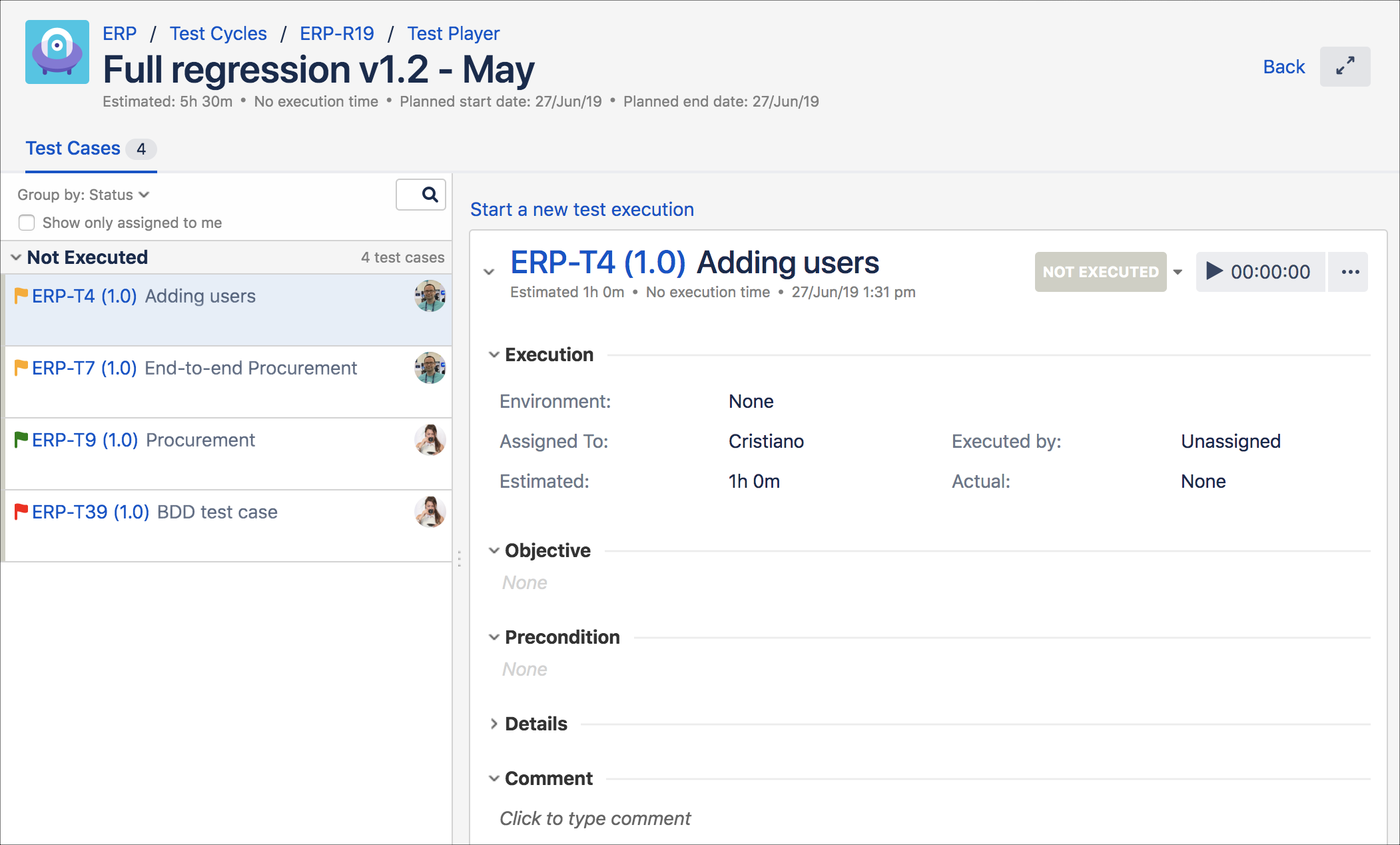
From the issue view, you can link test artefacts to the issue in the Traceability section.
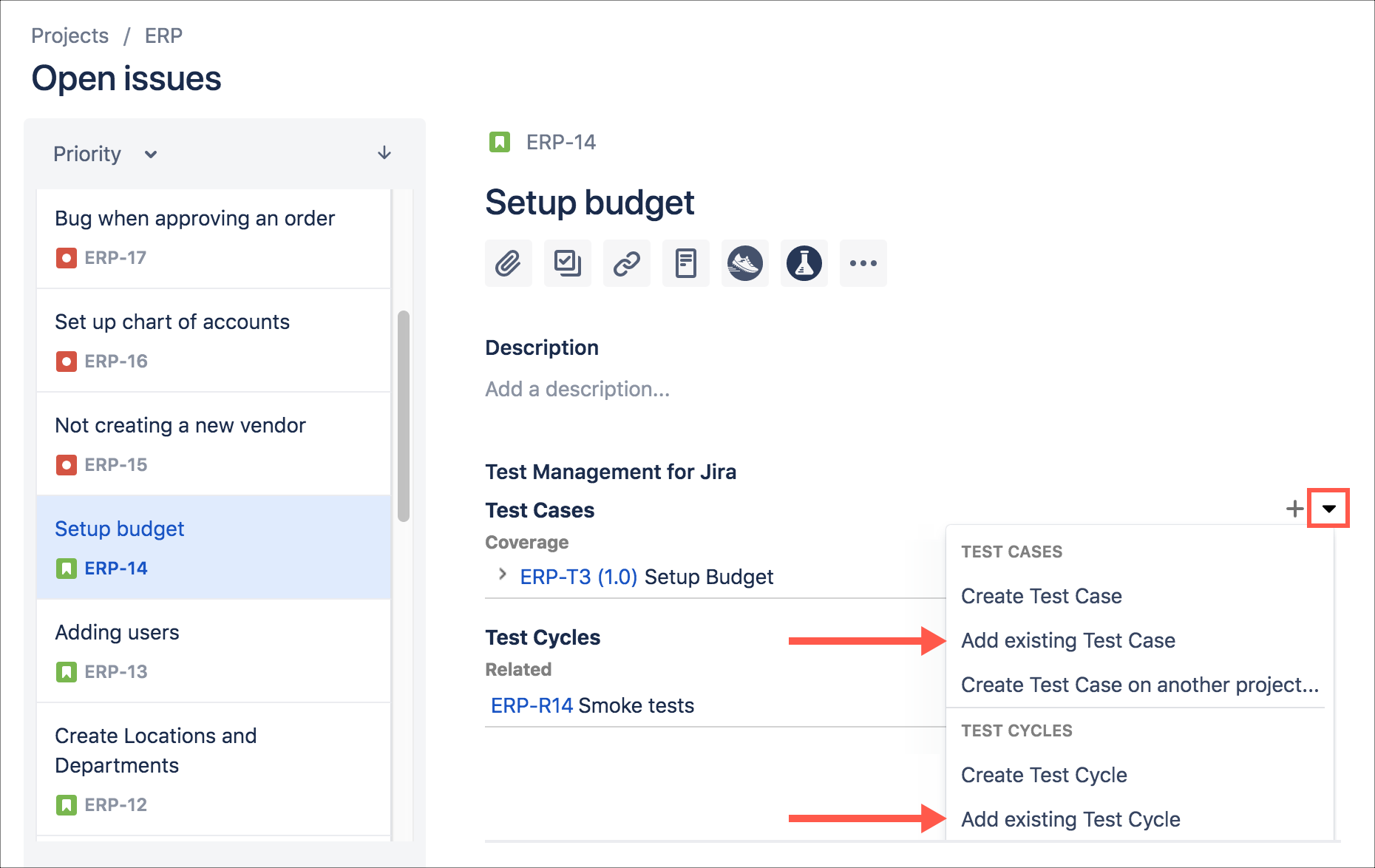
From the Reports view, you can select a report and filter by test cycle to track progress and quality.
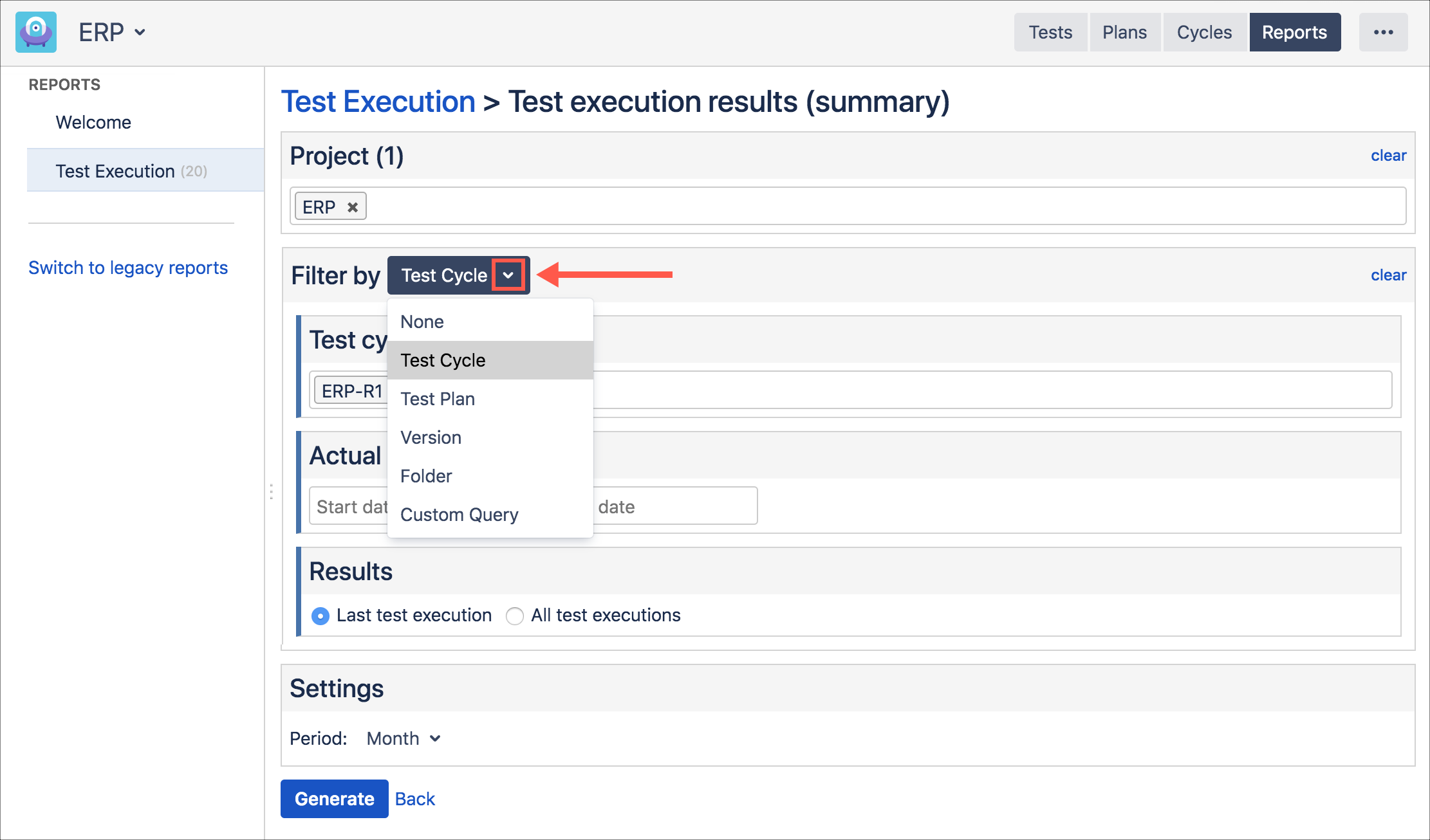
Waterfall Development with Test Plans
Zephyr Scale supports traditional/waterfall development and testing processes. Traditional approaches demand that you plan test assignment and execution in advance, sometimes even before any code has been released. Some software companies, however, require greater emphasis and detail about the planning phase. To meet this requirement, you can use Zephyr Scale’s test plans. Instead of using Microsoft Word or Excel to create the main test plan, you can create and customize a test plan within Jira to address a broad range of planning topics, such as scope, strategy, resources, environments, risks, and others.
Test plans provide a comprehensive view of your testing effort. You can even track the test-execution cycles from a higher level by linking test cycles to a test plan. In this scenario, test plans behave as a group of test cycles, so when you generate reports and statistics filtered by test plans, the information aggregates and displays the test-execution results, metrics, and coverage of the test cases associated with the linked test cycles, since the cycle is the container/group of test cases.
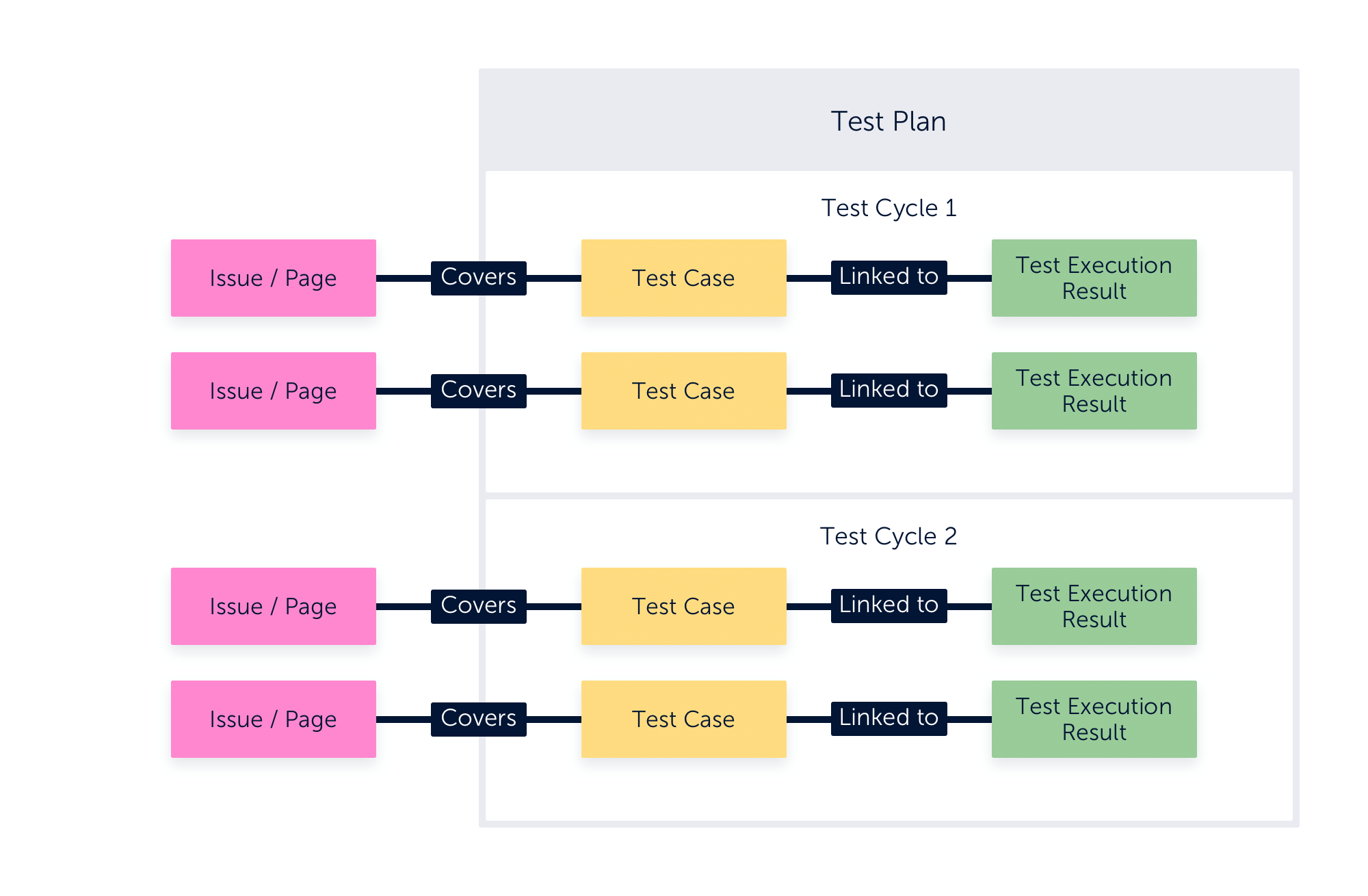
In Zephyr Scale
Use the Tests Cases view to manage your project’s test library.

Use the Test Plans view to create a new test plan and manage high-level test planning.

On the Test Plan screen, add a name and other field information to the Details tab. You can create custom fields to address scope, test strategy, risks, etc, to meet test-planning requirements.
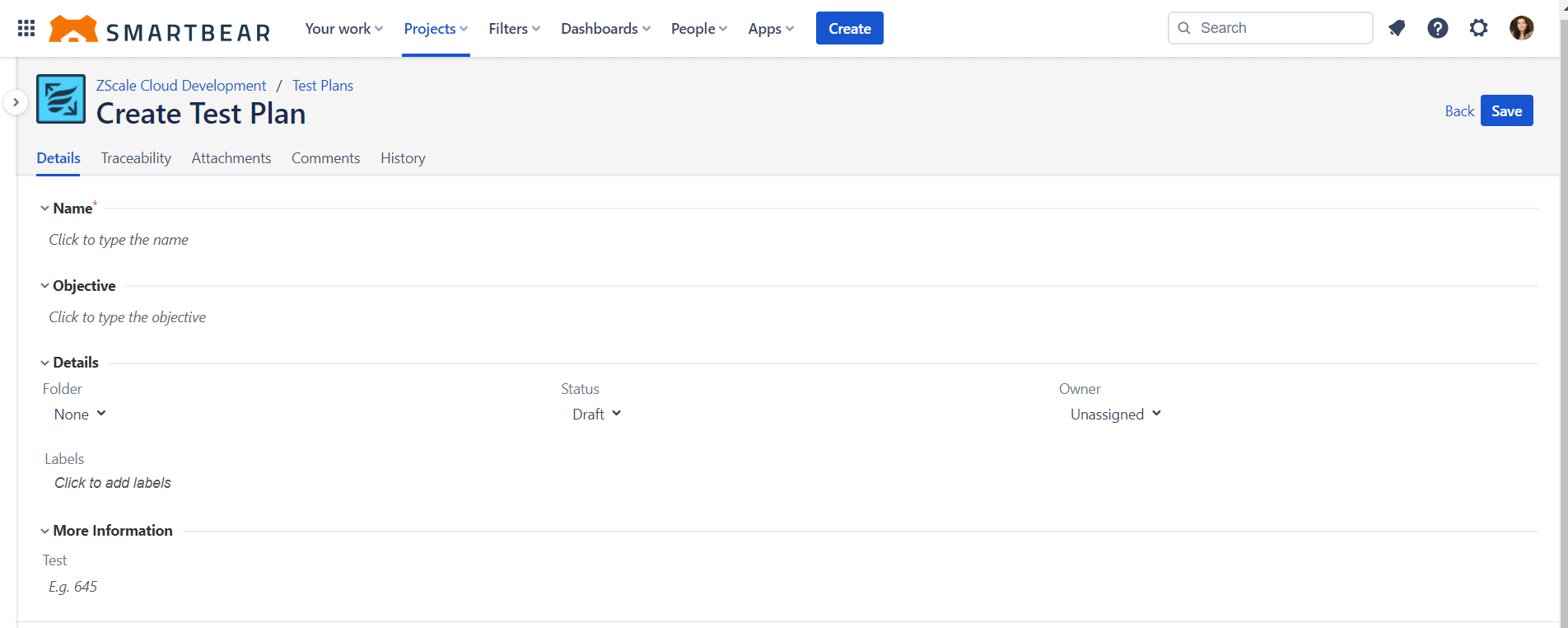
On the Traceability tab, you can link test cycles to the test plan. Test plans behave as a group of test cycles, so when you generate reports and statistics filtered by test plans, the information aggregates and displays the test-execution results, metrics, and coverage of the test cases associated with the linked test cycles.

Use the Cycles view to create a new test cycle and manage the test-execution cycle.

On the Test Cycle screen, add a name and other field information to the Details tab.
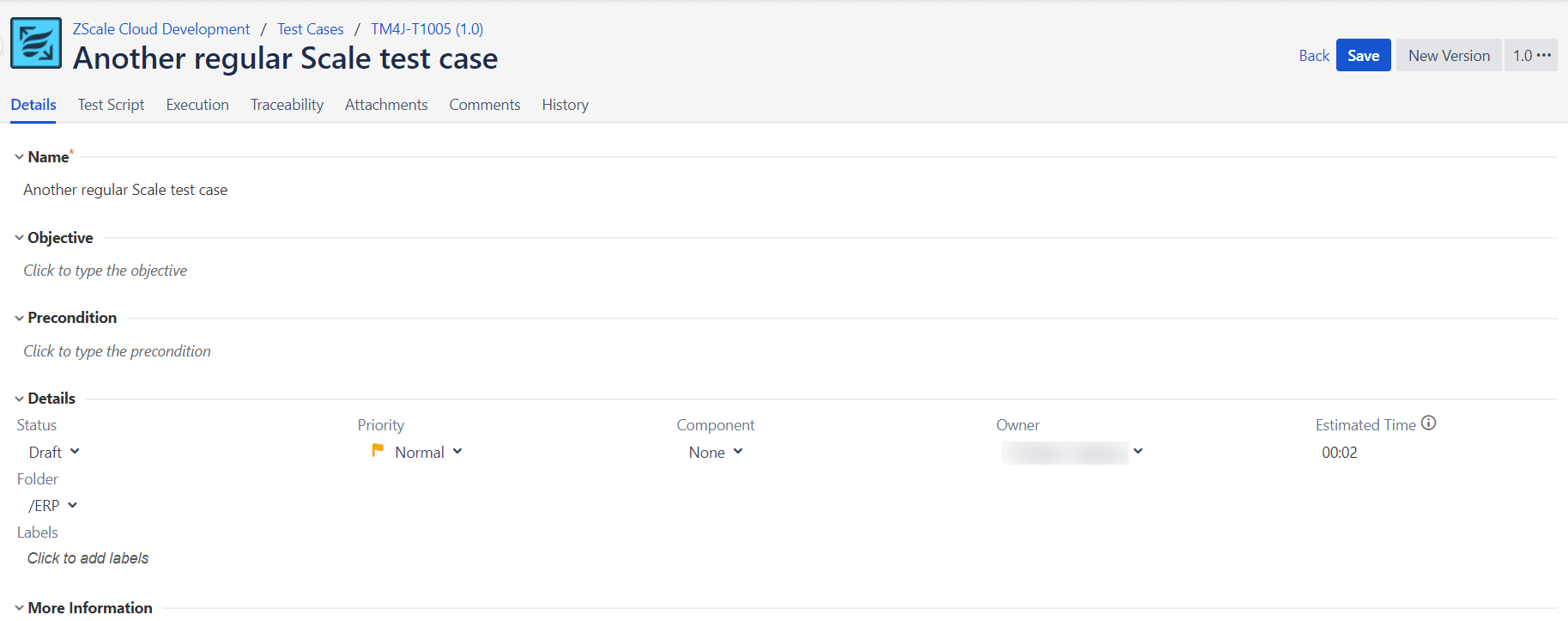
On the Test Cases tab, click Add Test Cases to add existing test cases from any Jira project to the cycle. You can also assign the tester responsible for executing the test case as well as a target environment.
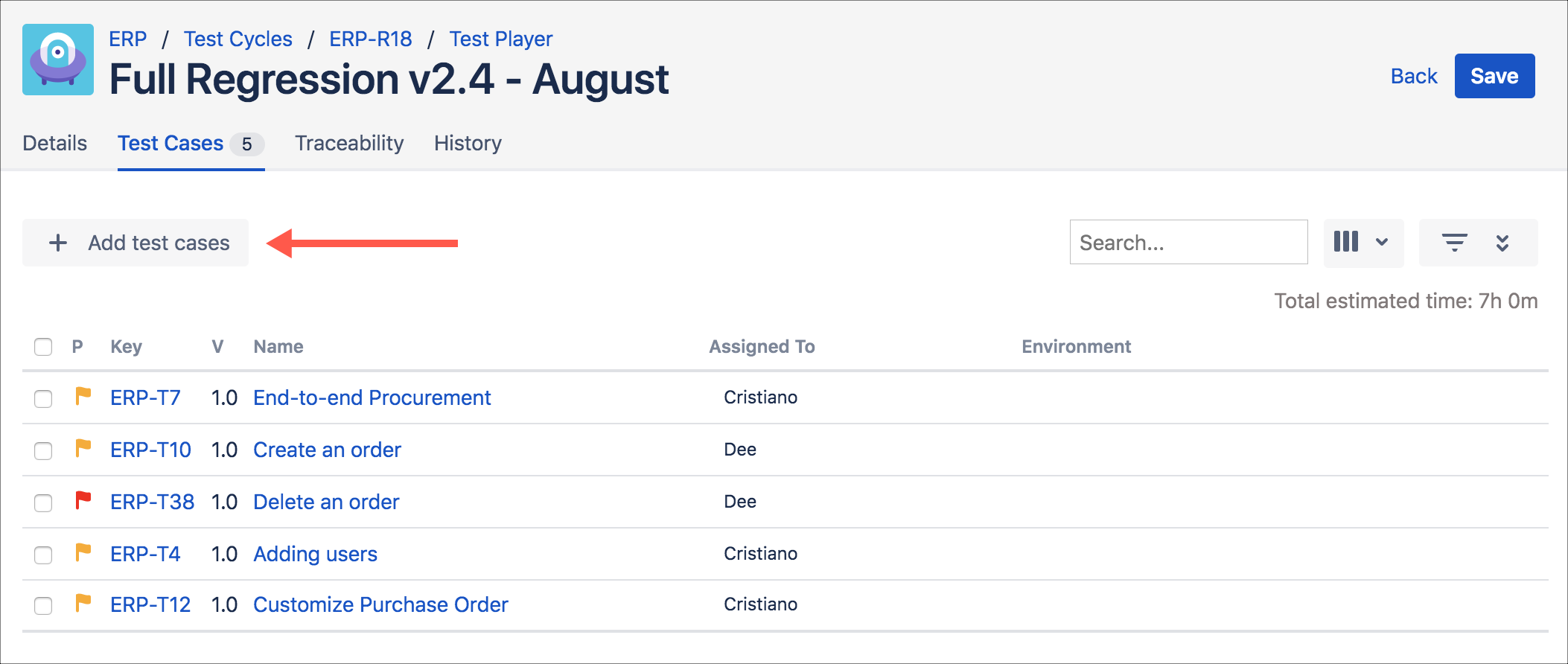
The testing team can fire up the Test Player to execute the test cases planned in the test cycle, set results, and raise defects.
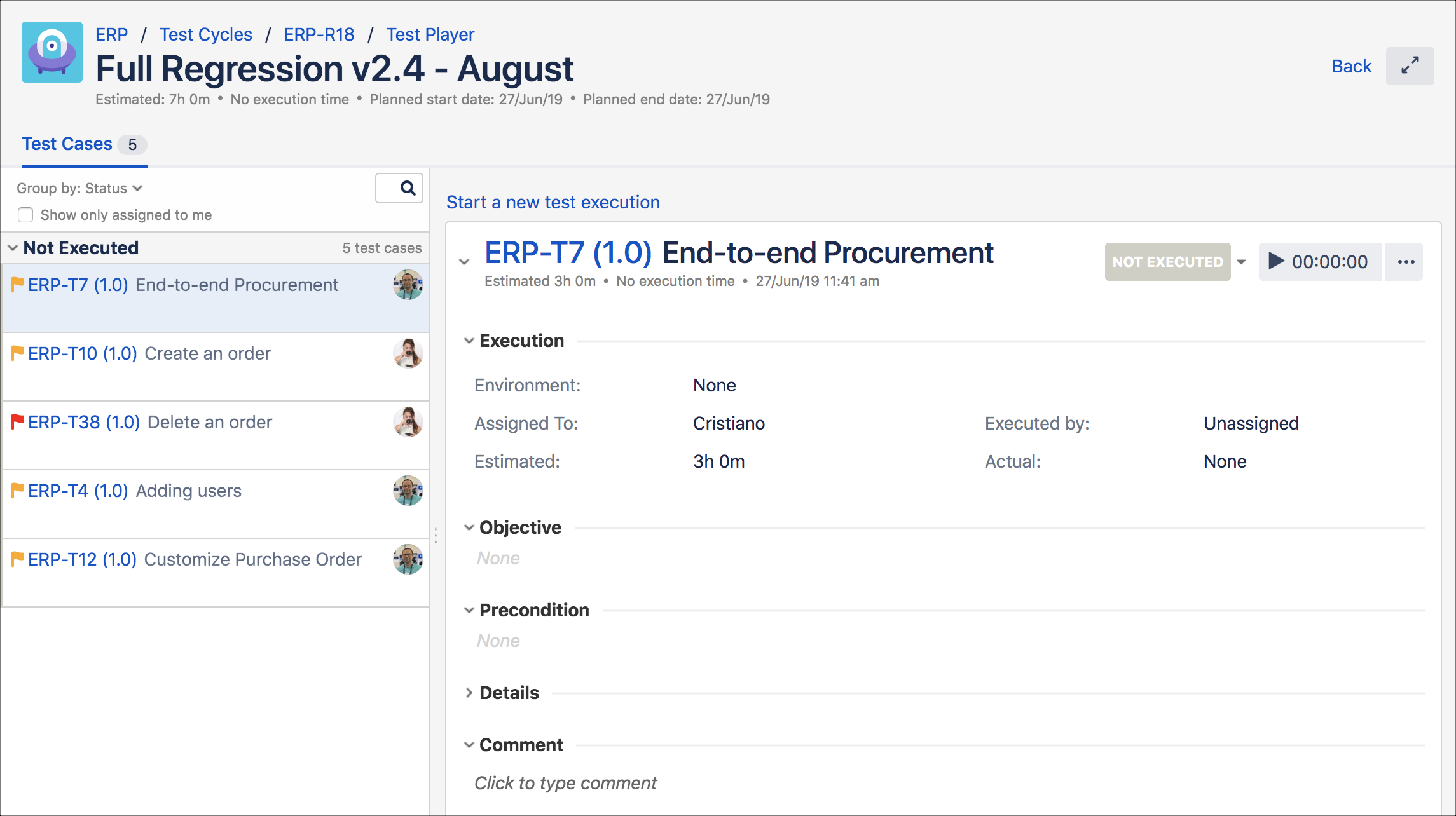
From the issue view, you can link test artefacts, including test plans, to the issue in the Traceability section.
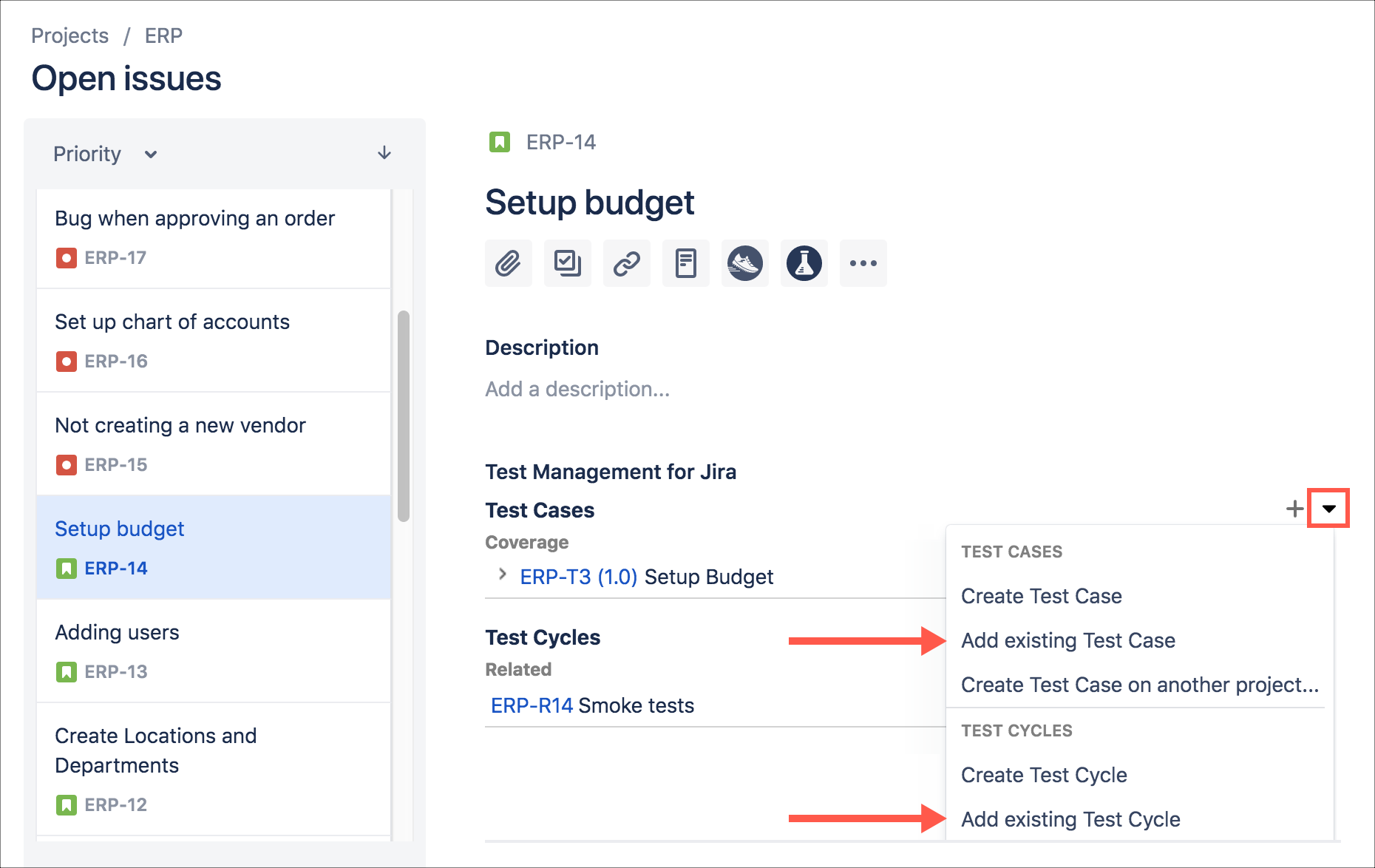
From the Reports view, you can select a report and filter by test plan (among other filter options) to track progress and quality of the linked test cycles.
